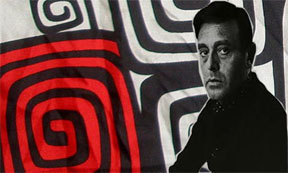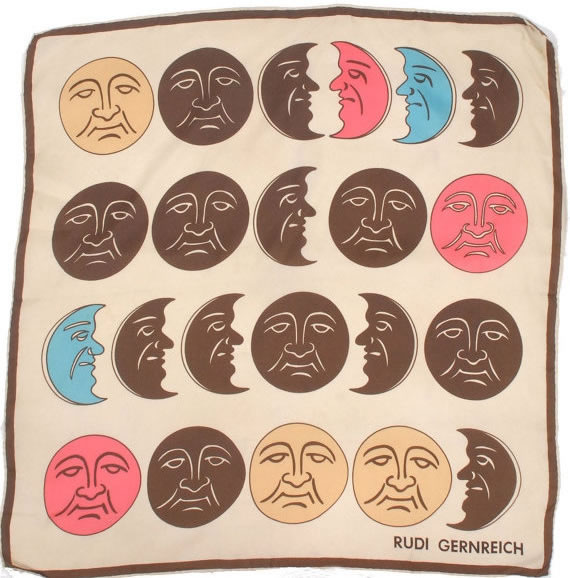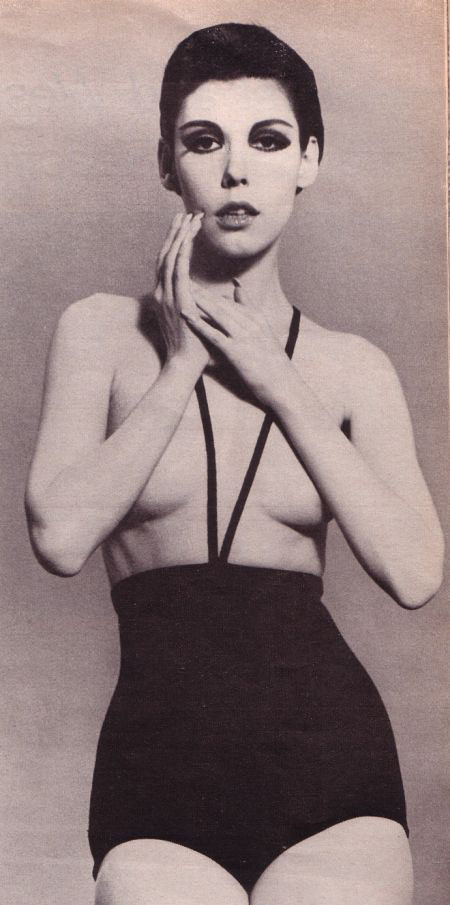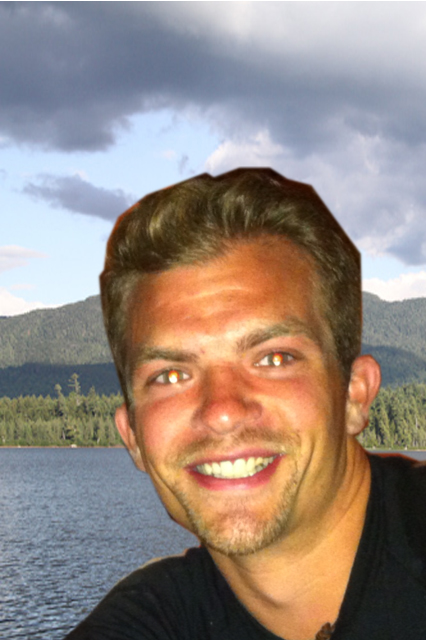Rudi Gernreich
- Artist Rudi Gernreich
- Rudi's Art
- Contributor

Born in Vienna, Austria, Rudi fled his home at the age of 16 under pressure of the advancing Nazi forces. Finally migrating to the United States and settling in Los Angeles, Gernreich became a known perfomer, dancing with the Lestor Holton company during the mid-40s.
Moving into fabric design allowed Rudi an avenue to begin his best known work, which became fashion design. Constantly pushing conceptions of fashion, Rudi created styles like the topless bikin, dubbed the "Monokini," as well as a bikin with a cutout window to expose the pubic region, that became known as the "Pubikini." While these designs were certainly fashion-forward, they did not gain much widespread recognition. Most contemporaries might recognize Rudi for another one of his creations, the "Thong."
An artist as well as an activist, Rudi was a co-founder of the Mattachine Society, the first sustained homophile society in the United States.
Always one to follow to follow his passion, Rudi left fashion later on in his career to persure his love for cooking, more specifically, gourmet soup. He is credited with the creation of a recipe for red-pepper soup, served chilled in a red-pepper casing, then garnished with lemon and caviar.

Rudi's father was a hosiery manufacturer, and his aunt owend a dress shop, so a young man Rudi was exposed to these basic elements of fashion. Working in his aunts dress shop, learning about fabric and design as a teenager allowed Rudi to develope a strong understanding and appreciation for the art and beauty of fabric, the building blocks and foundation of clothing design.
Rudi began his work in the United States in the fabric sector of fashion, until his designs were recognized, leading him to take up fashion and clothing design.
The work above is an example of one of Rudi's designs. This scarf demonstrates Rudi's unique style, as well as his knack for creating new and innovative designs.

Not only did Rudi have early experience with fabric and garments, but he too gained a great understanding of the human form as a young man through his work at a local morgue.
After Rudi and his mother were forced to flee Austria during the Nazi occupation, eventually settling in Los Angeles, Rudi was forced to work to support his struggling family. By washing cadavers Rudi became well aquainted with the figure and form of the female body.
This is an example of one of Rudi's earlier pieces, the "monokini" illustrates not only Rudi's willingness to push boundries and look outside the box, but his handling of the female form.
Rudi’s designs were featured in the first fashion video, Basic Black, in the year 1966. In a time when the word bra was said in a whisper, Rudi presented his “no-bra bra” to an astonished audience. During an era where women and fashion were encouraged to exist within the boundaries of societal structures, Rudi blurred, and often, broke through those boundaries. As we look around at what fashion has become today, we can thank Rudi for playing the role of liberator in many respects. By pushing the accepted limits of fashion to a new, different place, Rudi forged a new freedom for women, models, designers and artists alike.

I am a 4th year student, studying Spanish at UCLA. Different cultures and forms of expression are something that I treasure deeply. This appreciation and desire to experience new and different things is a continual motivation for me to travel the world over. Love of travel and culture was a major deciding factor in the choosing of my major, and this course.
The above picture is a shot of me on a night out with friends, transposed onto an image of Lower Saranac Lake, in the Adirondack Park of Upstate New York. The reason I used these two images is because of what they represent to me. The image of me on a night out with my friends represents my friends and the role they play in my life. The background is a photo taken of the lake that lies about 100 yards from the front door of my childhood home. This photo represents home, family and nature. Each of these things is of the utmost importance in my life, so I felt inclined to share them in a photo that was supposed to represent me.
The opportunity to better familiarize myself with not only the Queer community as a whole, but also the queer artists of Los Angeles really appealed to me. Opening my eyes to these two vibrant communities in Los Angeles has been a wonderful learning experience. Growing up in a rural town, deficient in both diversity and any strong artistic influence, I feel as though my upbringing lacked much of the cultural richness that Los Angeles has to offer. Through travel, and education I have been introduced to the tremendous divide that exists between areas of privilege and those areas less privileged. One reason that I chose Spanish as a major was with the hopes that one day I would be able to put my bilingual skills to work helping those less fortunate. As a parting thought, I would just note that, while it is easy, and many times more convenient, to immerse ourselves in our own lives, to surround ourselves with familiarity, there is a huge world out there that holds many great new, and different wonders. This class has exposed me to a world and culture that I would never have thought to explore, and now, with this website, we are able to share that with a much broader, more diverse audience. I sincerely hope you enjoy it.


